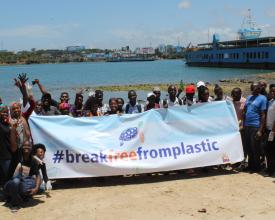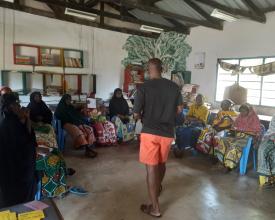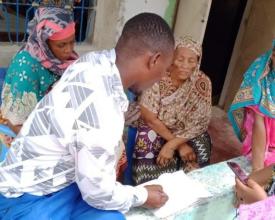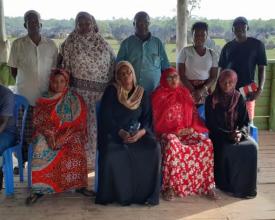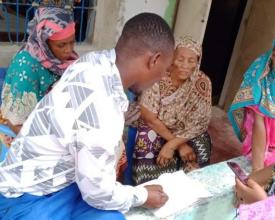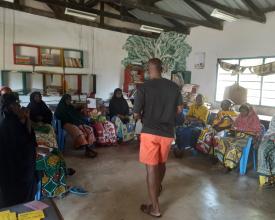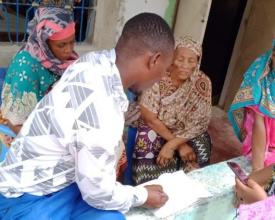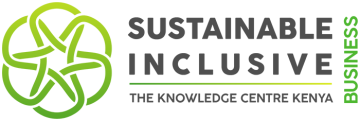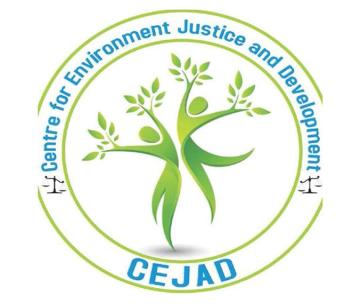
Integrating Value chain in Sustainable Solid Waste management in Kwale and Mombasa Counties, Kenya
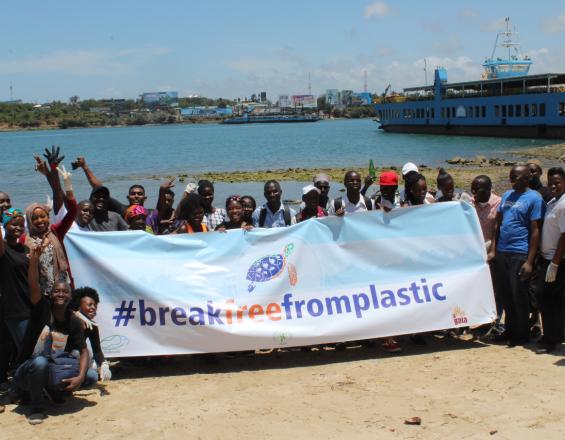
The Centre for Environmental Justice and Development (CEJAD)aims to combat plastic and waste pollution by promoting sustainable solid management through public education on impacts of plastics to the environment and demonstration of BATs/BEPs such as source separation of waste, reuse, recycling and recovery as well value chain efficiency.
The project seeks to conduct the following activities:
- Equipping the women artisans with machinery, tools, and equipment for making sculptures and items out of plastic waste.
- Training women artisans on product development and packaging.
- Establishing a pilot waste segregation at source and management system for recovery, reuse, and recycle of plastic and other waste.
- Training women artisans on marketing and how to maintain market linkages.
- Undertaking a market research for their products.
Context
Challenges addressed
- Need of incentives to accelerate plastic collection by community groups. Community groups have cited lack of incentives to collect plastic especially due to the low resale value of plastic waste and also due to transportation cost involved in transporting plastic waste to a recycling facility.
- Lack of enforcement to waste segregation from the county governments. Waste management is a function of the aforementioned but due to lack of enforcement resulting in the creation of landfills and marine plastic pollution.
- Transboundary waste movement is another challenge where waste from one county gets dumped to another country due to lack of waste management facilities as a result of rogue waste management collectors.
- Inadequate knowledge on creating linkages with plastic recyclers due to skewed perception of jobs associated with waste management i.e. poor man’s job, a social outcast, etc.
- Inadequate capacity among BMU to monetize marine plastic due to low waste volumes collection.
Location
Process
Summary of the process
With financial support from Canadian Fund for Local Initiative successfully implemented a project “Building the capacity of women to address the challenge of marine pollution through a waste separation and recycling program in Mombasa”.
The value of the fora also acts as a platform for assessing the different needs and gaps to be fulfilled by the training programs.
Also, CEJAD uses the platforms to rally members in aligning resources as well as invest in the marine plastic waste value chain thereby, guaranteeing success going forward.
Building Blocks
Multi stakeholder Forums
CEJAD realized the value of engagement is very critical in getting various stakeholders with different needs to realign consequently unlocking resources as well as forge alliances for meaningful participatory development.
Forums were held in the community to ensure that public participation is at the heart of the marine plastic waste as well as getting community groups to own the problem and take charge.
Enabling factors
- Alliance: Establishing alliances has contributed to ensure the perpetuity of the plastics value chain as well as the development of marketing platforms for plastic waste products.
- Stakeholder engagement: Establishing platforms and fora is very critical in getting various stakeholders with different needs to realign and get buy-in from partners consequently unlocking resources as well as forge alliances for meaningful participatory development. Forums were held in the community to ensure that public participation is at the heart of development.
Lesson learned
- Proper documentation must be followed through with action points that are all rounded as well as approved by all to enhance accountability.
- Amplify and provide visibility for impactful members so as they can be champions and ambassadors for plastic waste management.
- Link the training to sources funding for the sustainability of the ventures for desired outcomes as well as continuous mentorships and coaching sessions including table banking.
- Cooperation must be at the heart of the engagement to facilitate waste management initiatives.
Training and capacity building
Public awareness and trained community groups in old town on plastic waste substitution, recycling, reduction, recovery, and safe disposal practices.
Equipping the women artisans with machinery, tools, and equipment for making sculptures and items out of plastic waste as well as training women artisans on product development and packaging was very well informed.
Empowerment is just a means to an end in ensuring that plastic waste management is mainstreamed.
Enabling factors
- Establishing enterprises: This factor has been critical in sneering sustainability is enhanced all through, including linking the community groups with financial institutions to enhance their financial management skills.
- Established a model centre at the Madubaa landing site for demonstrating best practices for zero-waste, 3Rs (reducing, recycling and re-using), showcasing viable plastic waste products and enterprises, troubleshooting, and continuous learning.
Lesson learned
- Provide incentives to catalyse waste segregation at source as well as compliment it advocacy awareness to ensure county governments step their roles and function of proper waste management enforcement.
- Develop programs that enhance paradigm shift to promote circularity among stakeholders in a consultative manner. i.e. walk with them through the journey, co-creation sessions.
Impacts
- Sensitized and trained community groups in old town on plastic waste substitution, recycling, reduction, recovery, and safe disposal practices.
- Established a model center at the Madubaa landing site for demonstrating best practices for zero-waste, 3Rs (reducing, recycling, and re-using), showcasing viable plastic waste products and enterprises, troubleshooting, and continuous learning.
- Facilitated public/stakeholder dialogue on mainstreaming plastics and UPOPs reduction and management in county government policy, plans, budgets and projects.
Beneficiaries
- Women Groups
- Beach Management Units (BMU)
- Tourist hotels
- Local communities
Sustainable Development Goals
Story
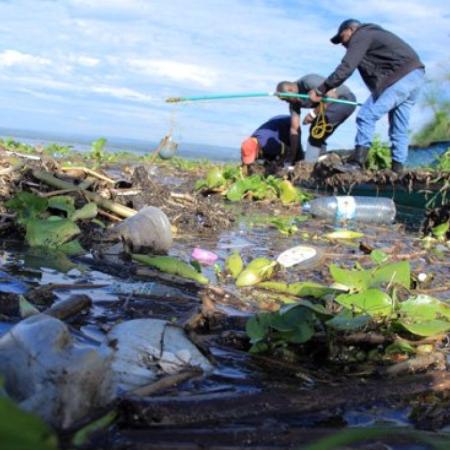
From a young age our parents instilled us a deep appreciation and love for nature through leading by example. We knew the names of birds and trees long before we could string proper sentences together and many of our childhood holidays were spent in rock pools exploring and snorkeling come rain or shine. We practically grew up in a tent. To share their love for these wild places through adventures across our continent has helped me understand that the basics are enough, a plan can always be made and that nature is our most powerful teacher. These truths have become the framework we’ve built our life upon started out as a jeweler with the jewelry tools from university that consisted of a range of files and pliers mostly. We saved up just enough money to buy a second hand operated metal roller. To this day these are the tools that tell our story. We didn’t want to wait until we had enough money saved before setting up shop. We wanted to start with what we had right there where we was. When it comes to our creative dreams the desire to begin has always been greater than the fear of failing. We enjoy the challenge minimal tools bring to the table. We cherish not having to rely on the conventional idea of what jewellery should look like when a full range of jewellery making equipment is at play. Limitations became an inspiration and a strength both in the personal and business worlds. We make jewellery from anything and everything specializing in found objects and alternative metals – the brass I used was sourced from guys welding radiators together down the road; my copper came from a plumber that would pass by the studio on his way to the scrapyard to cash in. It has been a way of life long before I moved to Wasini Island. It has been the way we make jewelry since we started. Expanding our business does not lie in expanding the bank account or the number of people we employ, expanding our business means expanding our mind. There is power in collaboration and empowering through creative thinking is what brings about change.
